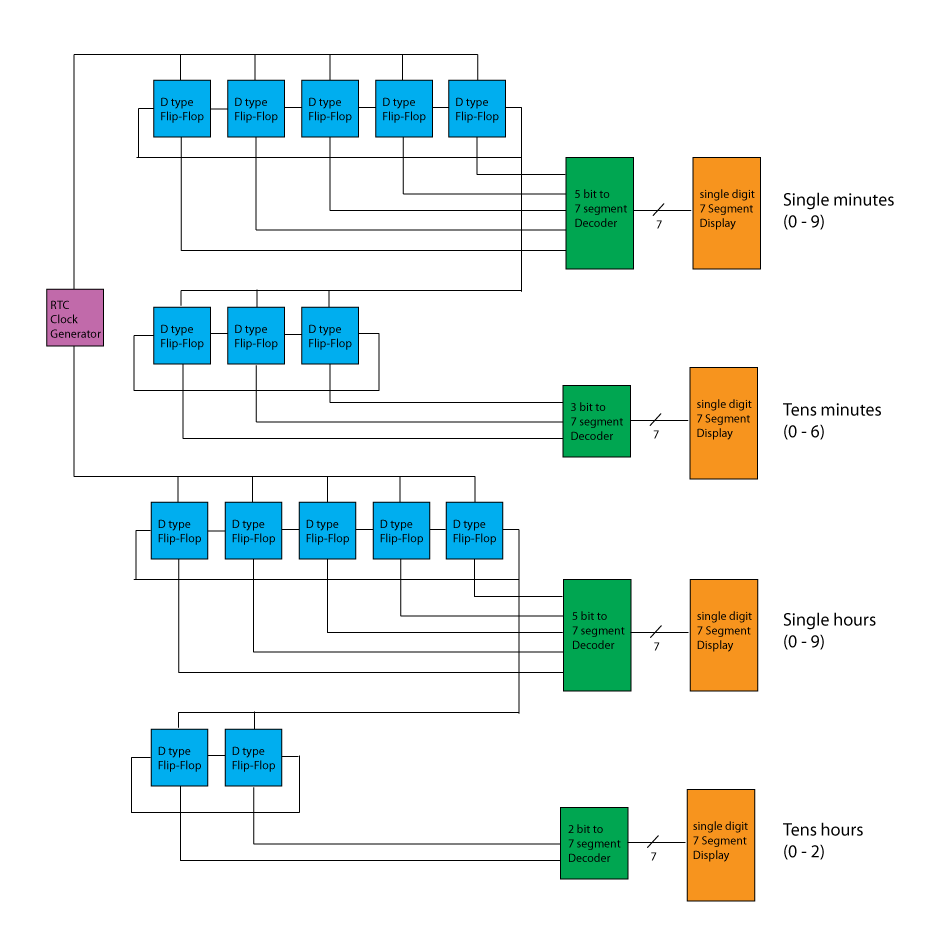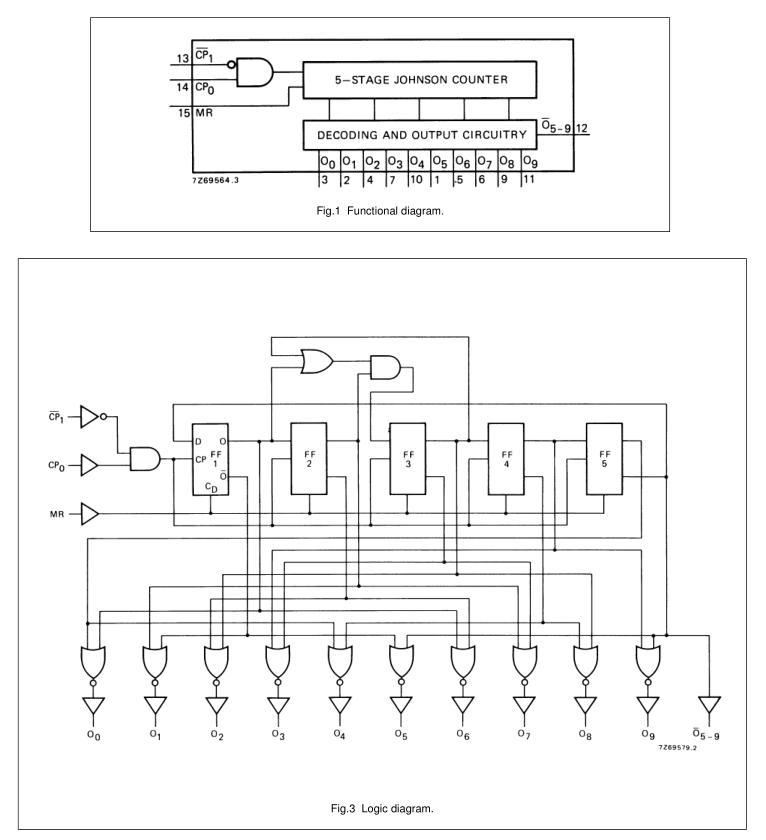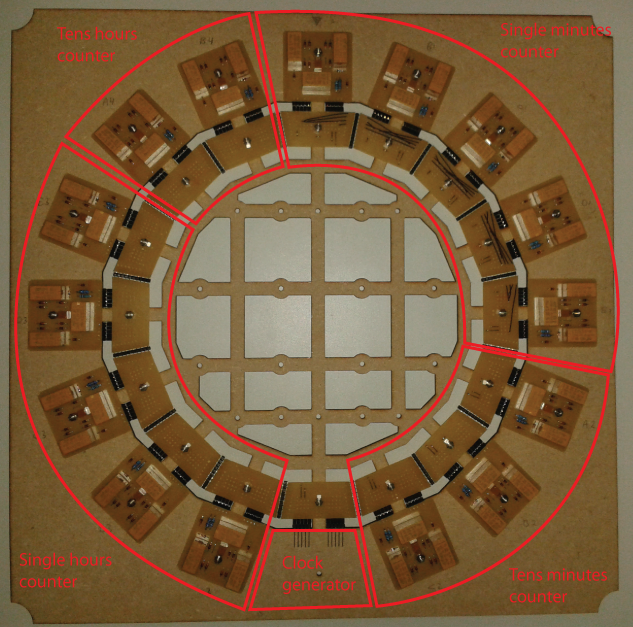Schematically the clock consists of four Johnson counters, cascaded together to count and display time in 24hour format. I chose Johnson counters instead of regular binary counters because the decoding to seven segment requires less logic gates than a regular binary counter. Every logic operation is done with relays, so every operation counts.
A Johnson counter has 2n states, so a 5-stage Johnson counter can have 10 different states. Minutes count from 0 to 59. The lower digit goes from 0 to 9 and thus requires a 5-stage Johnson counter. The upper digit goes from 0 - 5 and therefore has only a 3-stage counter. The same logic applies to the hour counting.
This is a block diagram of the different functional blocks in the clock.
The design of the counters and the decoding circuitry closely resembles what can be found in a 4017 chip. The following was taken from a datasheet. Minus the two AND and OR gates at the top it is the same. After decoding from 5 bit to 1 in 10, it is further decoded to 7 segment via an array of diodes (not shown here).

This is a front view of the partially completed clock and shows the layout of the different functional blocks. The four decoders and seven segment displays are not yet mounted in this picture. The MDF board is just a temporary frame to hold the parts for assembly and soldering. Once everything is finished, it will be transfered to a 6mm clear Plexiglass sheet with only the holes for the screws drilled. The large cutouts in the MDF are for easy access on the back for soldering and will not be present in the final Plexiglass sheet.

 Dave Gönner
Dave Gönner
Discussions
Become a Hackaday.io Member
Create an account to leave a comment. Already have an account? Log In.